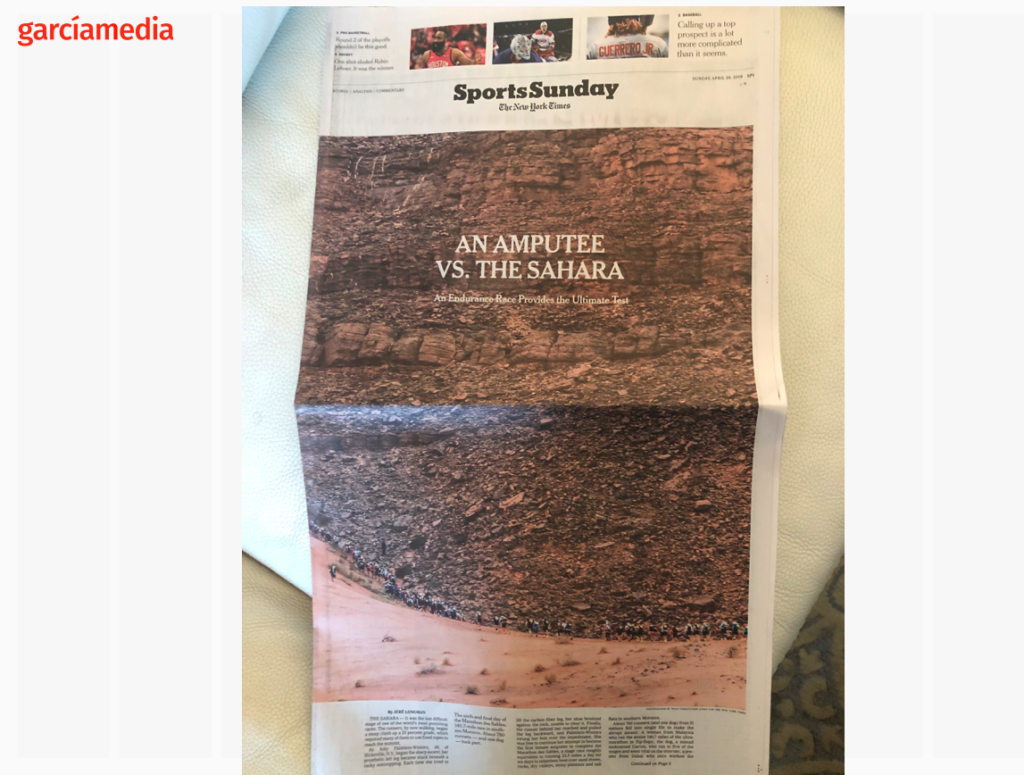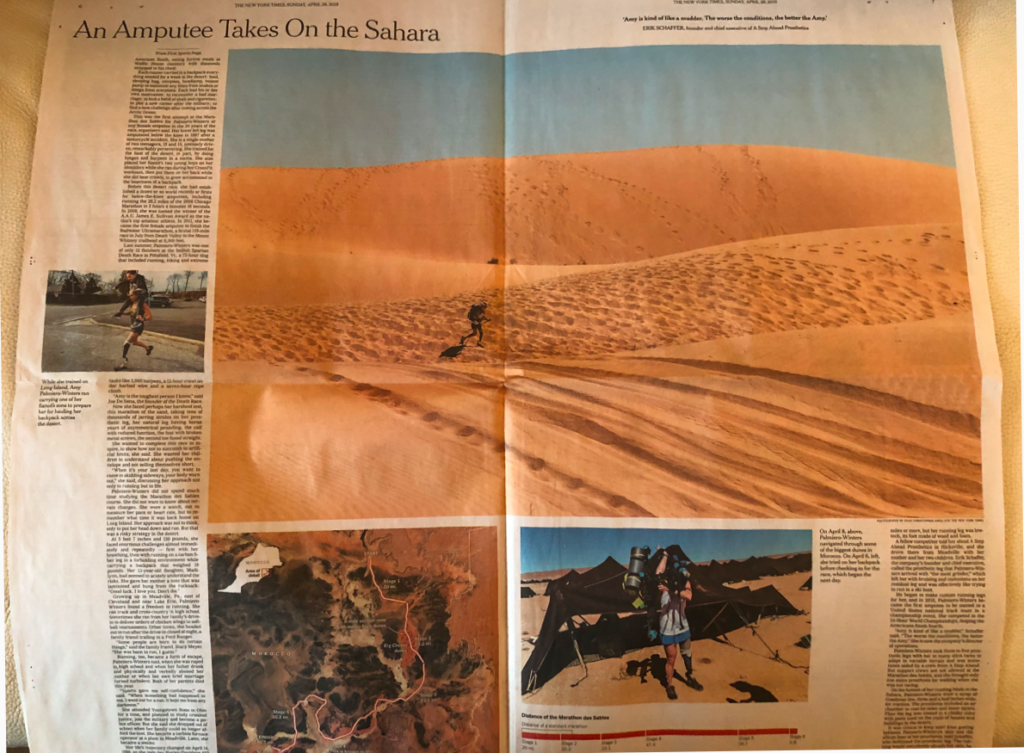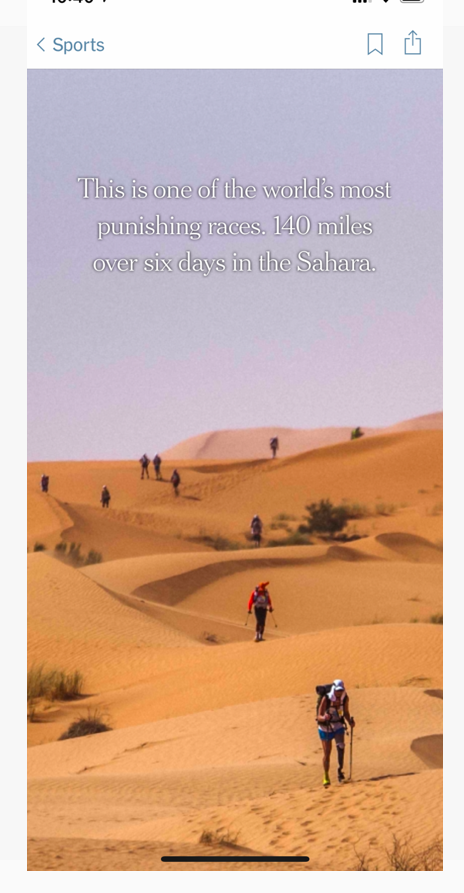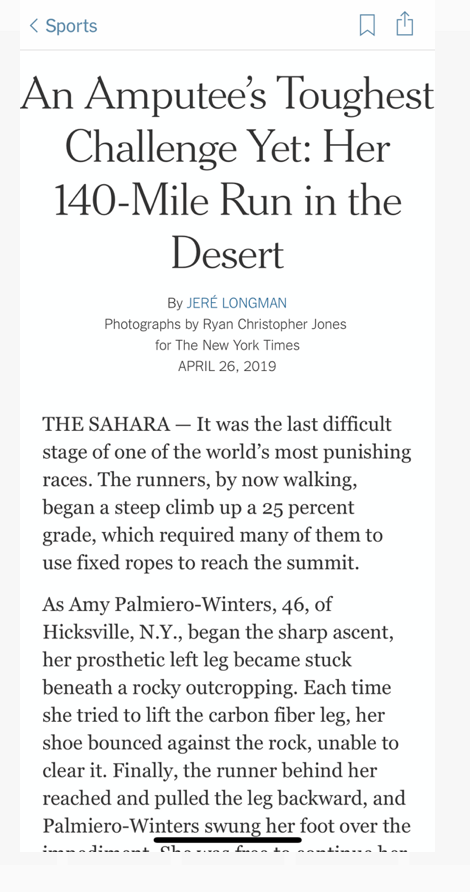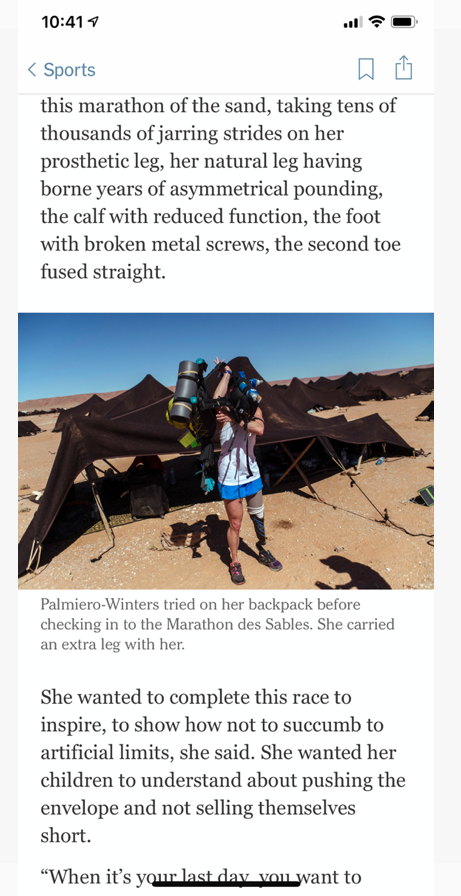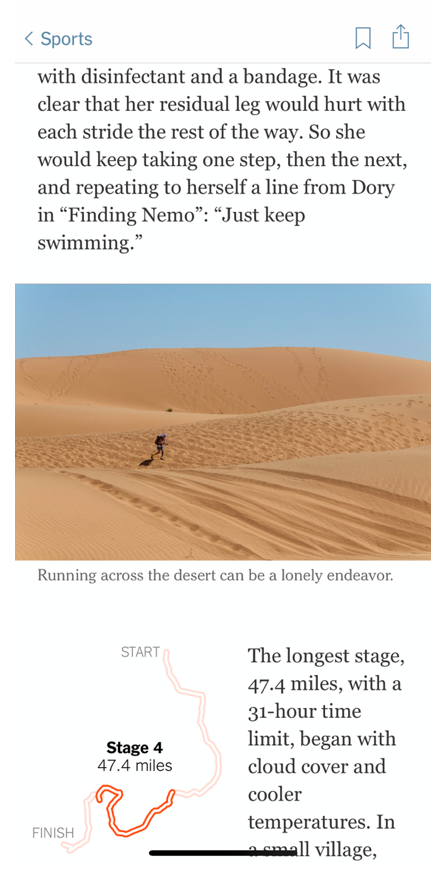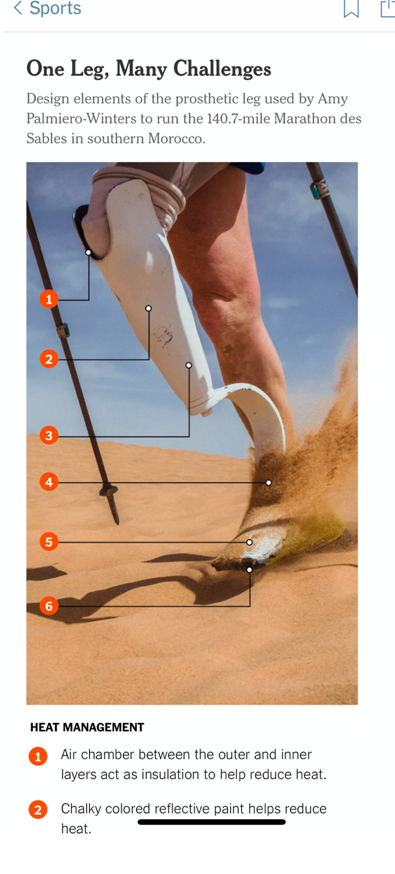This is the weekend edition of TheMarioBlog and will be updated as needed. The next blog post is Monday, June 24,
Here I was, at the conclusion of a workshop at Berlin’s Tagesspiegel, devoted entirely to mobile, linear storytelling.
It was a time for the Q & A session. The first question was one about retention levels in print versus digital.
“What you are presenting is a wonderful way to tell stories,” said the young journalist asking the question.” But I wonder about retention levels and what studies tell us about the way we read and retain information in print versus digital.”
Let me paraphrase what my answer was:
- You may be right and I will look up some of the studies to see what I find.
- Remember that with mobile we are dealing with the journalism of interruptions. The phone rings. You go to Instagram for a moment, or to read your mail, or to order dinner.
- Furthermore, the world is moving to consuming information on the small screen of the smartphone. That train has left the station and I do no anticipate that, even if retention levels are higher for print, that we will see subscribers flocking to printed newspapers and magazines in large numbers.
The studies
As soon as I had a break from the workshop, I tried to dig up research on the major differences between print and digital, and, specifically, about retention levels.
Here are some of the findings:
Reading faster in digital, absorbing less
https://foreword.mbsbooks.com/print-versus-digital-what-does-the-latest-research-tell-us-1#gsc.tab=0
This is a study by Lauren Singer and Patricia Alexander, of University of Maryland, that compared print and digital comprehension among college students reading newspaper articles and fiction excerpts.
“The studies showed students read digital formats faster — at a cost. Students gleaned the main idea from digital texts as well as they did from print. But they absorbed fewer details, which suggests students are much better off reading print for in-depth, university-level study.
Students believed their comprehension of the digital texts was better, however, so it’s not surprising that they overwhelmingly preferred digital to print, too. Most of us are more likely to favor formats that give us a sense of competence.”
Do students learn as much when they read digitally as they do in print?
https://newrepublic.com/article/135326/digital-reading-no-substitute-print
In this research, Naomi Baron has compared the ways in which we read in print and onscreen. Between 2013 and 2015, the author gathered data from 429 university students drawn from five countries (the U.S., Japan, Germany, Slovenia and India).
When asked on which medium they felt they concentrated best, 92 percent replied “print.” For long academic readings, 86 percent favored print. Participants also reported being more likely to reread academic materials if they were in print.
The students in my study reported that print was aesthetically more enjoyable, saying things such as “I like the smell of paper” or that reading in print is “real reading.” What’s more, print gave them a sense of where they were in the book – they could “see” and “feel” where they were in the text. Most studies have found that participants scored about the same when reading in each medium, though a few have indicated that students performed better on tests when they read in print.
The problem, however, with learning-measurement studies is that their notion of “learning” has tended to be simplistic. Reading passages and answering questions afterwards may be a familiar tool in standardized testing, but tells us little about any deeper level of understanding
Generally, participants in the surveys above agreed that it is harder to concentrate when reading on screens as opposed to print—more distractions, many said.
Paper Beats Digital In Many Ways, According To Neuroscience
https://www.forbes.com/sites/rogerdooley/2015/09/16/paper-vs-digital/#666d0e5133c3
This article quotes a Temple University study that deals primarily with perceptions of advertising in print versus digital.
“Perhaps the most significant finding from the Temple study was that paper advertising activated the ventral striatum area of the brain more than digital media. A previous study of successful ad campaigns found that the ventral striatum was an indicator of desire and valuation.
While not quite the mythical “buy button,” activity in this small brain structure had the highest correlation with advertising effectiveness. The study showed that ventral striatum activity was a better predictor than self-reporting by the subjects.”
Some conclusions
Obviously, the studies I have mentioned here all point to greater concentration and retention levels of content when peoiple are consuming such in print. When we hold on to a newspaper our magazine, we have both hands on the paper and chances are we have set up time to get away from distractions. At least that is what I do when I tackle my Sunday New York Times, or The Atlantic magazine, two publications that I occasionally read in their printed versions.
My digital reading is plagued with interruptions: it is, after all, a phone on which we are reading that story analyzing what could be the most interesting and complicated Presidential election in the history of the USA. It is here, however, that most readers, including me, are reading, so we must try to do our best as readers to concentrate when reading on mobile devices. Definitely, as journalism practitioners, we must learn as much as possible about storytelling for mobile, so that we can create story packages that engage and retain.
Where print rocks
Forget retention levels for a moment and just take a look at the colorful, vivid facts. Print is where big photos can seduce us the way photos can’t on the canvas of a small newspaper. An example of this appears in this Sunday sports piece from The New York Times. The way those photos are displayed in the print edition are superb. Those photos are going to have greater impact here, and we will remember them more.
Just the way that a good video shown at the right time in the middle of a story can put emphasis on that unforgettable moment of the story that will stay with us because of how it was presented.
Take a look at the New York Times story here:
https://www.nytimes.com/interactive/2019/04/25/sports/amy-palmiero-winters-marathon-des-sables.html
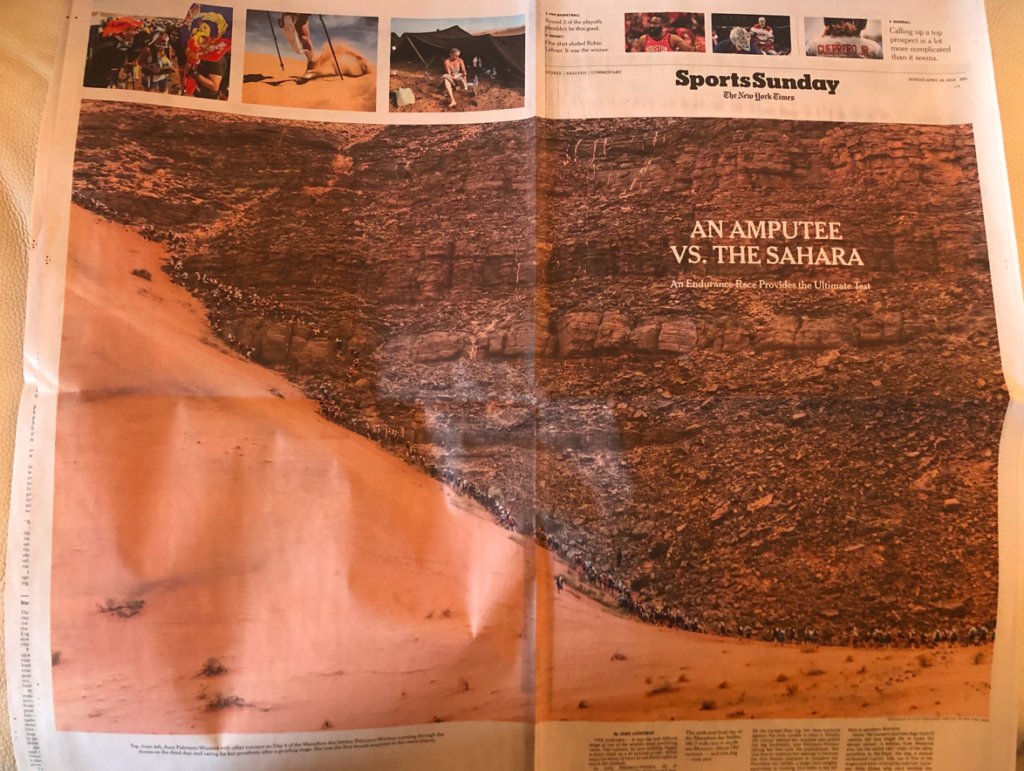
Mario’s speaking engagements
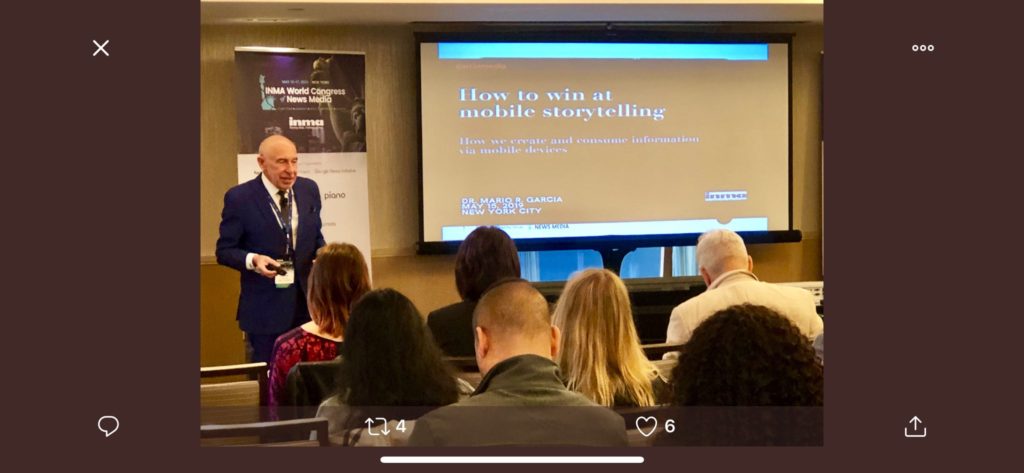
Here are places where I will be taking the message of mobile storytelling in the weeks ahead:
July 11, Florida Media Conference, St. Petersburg, FL, Keynote for editors: The mobile first newspaper strategy.
Mario’s weekend rituals…..
Monocle interviews me about what I do on a typical weekend (is there such a thing? Not for someone like me who is seldom in the same location twice. But I gave it my best shot, for what may come as a normal weekend, when I am home in New York! Enjoy.
https://monocle.com/minute/2019/04/27/
Pre-order The Story
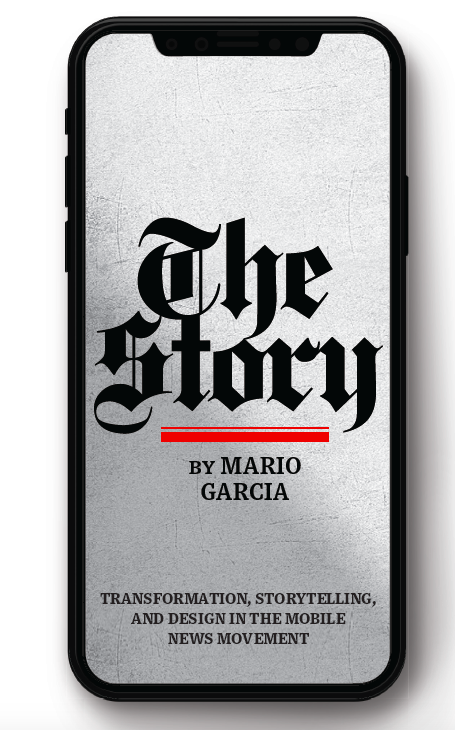
The newspaper remains the most powerful source of storytelling on the planet. But technology threatens its very existence. To survive, the Editor must transform, adapt, and manage the newsroom in a new way. Find out how, pre-orderThe Story by Mario Garcia, chief strategist for the redesign of over 700 newspapers around the world.
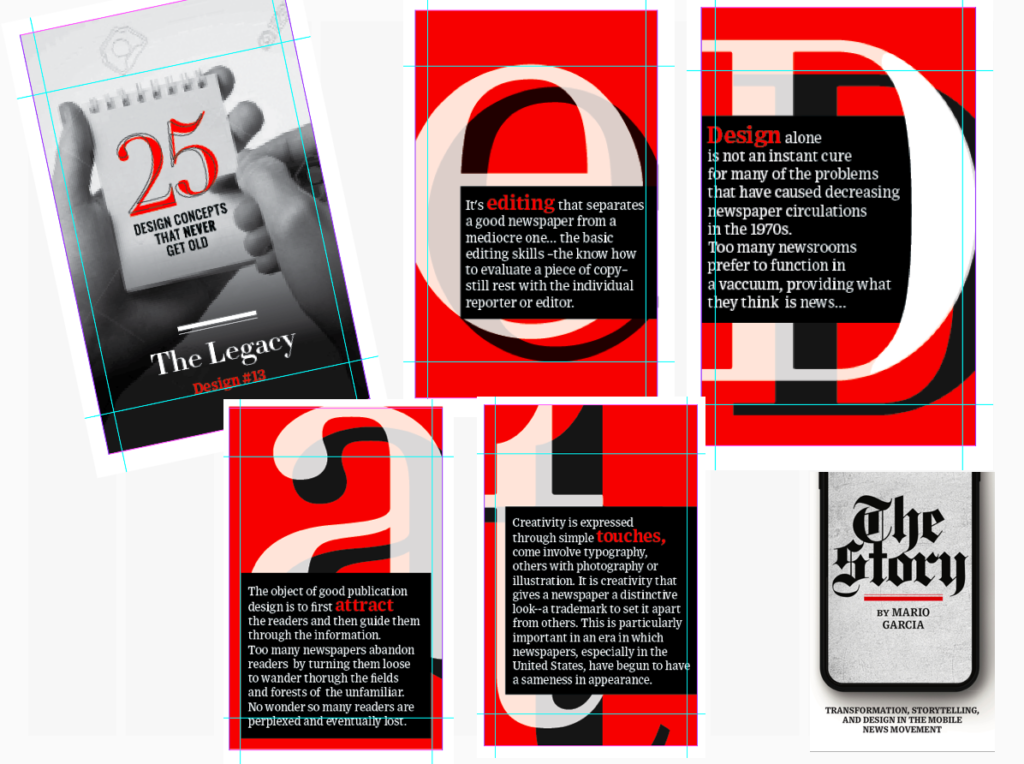
Order here:
https://thaneandprose.com/shop-the-bookstore?olsPage=products%2Fthe-story

An interview of interest
http://www.itertranslations.com/blog/2019/3/11/fd60ybflpvlqrgrpdp5ida5rq0c3sp
TheMarioBlog post #3078
